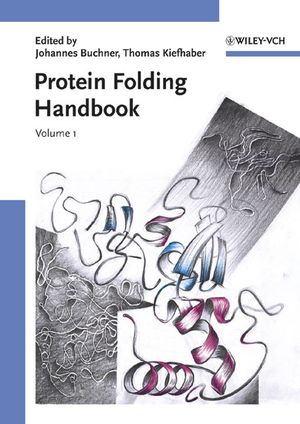Protein Folding Handbook, 5 Volume SetISBN: 978-3-527-30784-5
Hardcover
2623 pages
March 2005
 |
||||||
How a polypeptide chain folds into a stable and functional protein is probably the most important question in present-day molecular biology. Reliably predicting the folding process allows to deduce protein function from genomic information alone and will bring about a revolution in structural genomics. Understanding the way in which proper protein folding is controlled by the cell is required to find a cure for Alzheimer's and other diseases caused by misfolded proteins.
This unique handbook contains the expertise from more than 60 research groups, covering the entire range of topics in protein folding - from biophysics to molecular medicine.
The first part explains the principles and factors governing protein stability, and how this knowledge may be used to predict folding pathways. It also surveys important techniques used to study the protein folding process, including spectroscopic, chemical and biological techniques.
The second part is devoted to protein folding, unfolding, and misfolding in the cellular context, introducing chaperones and other enzymes involved in protein folding, as well as a study of the pathophysiology of misfolded proteins in amyloid and other disease states. The whole is rounded off by a discussion of the possibility of interfering with the protein folding process by genetic engineering.
The comprehensiveness and outstanding quality of the carefully selected contents make this the ultimate reference for every scientist with an interest in protein folding.
This unique handbook contains the expertise from more than 60 research groups, covering the entire range of topics in protein folding - from biophysics to molecular medicine.
The first part explains the principles and factors governing protein stability, and how this knowledge may be used to predict folding pathways. It also surveys important techniques used to study the protein folding process, including spectroscopic, chemical and biological techniques.
The second part is devoted to protein folding, unfolding, and misfolding in the cellular context, introducing chaperones and other enzymes involved in protein folding, as well as a study of the pathophysiology of misfolded proteins in amyloid and other disease states. The whole is rounded off by a discussion of the possibility of interfering with the protein folding process by genetic engineering.
The comprehensiveness and outstanding quality of the carefully selected contents make this the ultimate reference for every scientist with an interest in protein folding.



